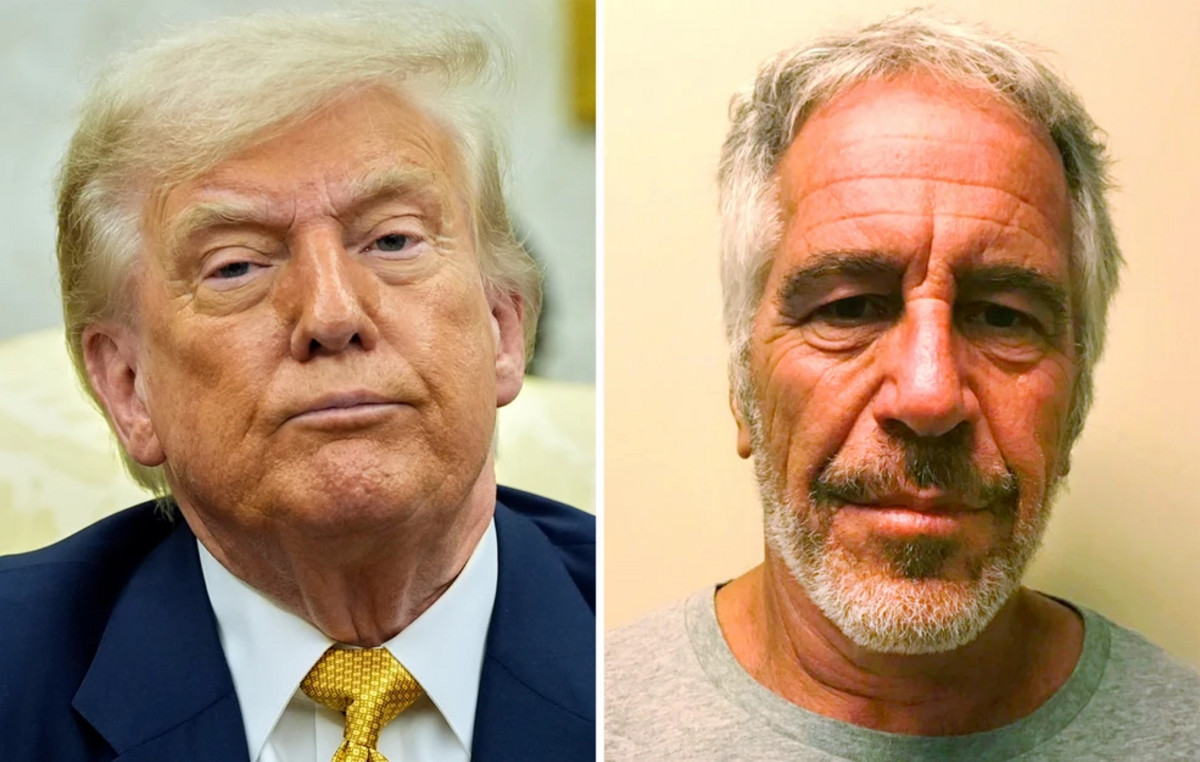The pandemic has been difficult, but returning to face-to-face classes has also been emotionally difficult for Mary Norris’ 12-year-old daughter.
Norris says his daughter was bullied at the school she attended last year in Fresno, California, near where her father lives. Then she transferred to a school in Madera, where her mother lives. This year is going better, but Norris says his daughter is still struggling emotionally.
She recently received a call from a school official who said his daughter had written something disturbing in her diary.
“She wrote in her book that she wished she were dead and she wanted to kill herself. And my daughter is always a very happy, smiling child,” Norris said.
Norris is one of more than 2,000 adults surveyed this summer by CNN and the Kaiser Family Foundation on mental health issues in the United States. The nationally representative sample included over 500 parents.
Nearly half of those parents, 47%, say the pandemic has negatively affected their children’s mental health, with 17% saying it has had a major negative impact.
More than 8 in 10 parents said they were at least a little concerned about depression, anxiety, alcohol and drug use negatively impacting the lives of US teens, while about three-quarters said they were concerned about pandemic-related self-harm or loneliness and isolation.
More than 4 in 10 said they were very concerned about alcohol and drug use, anxiety and depression affecting teenagers. Low-income parents — those earning less than $40,000 a year — were more likely than those from high-income families to say they are very concerned about self-harm, eating disorders, depression, and alcohol and drug use.
According to the survey, more than half of Americans (55%) think the majority of children and teens in the US cannot get the mental health services they need.
Many areas lack mental health providers for children and adolescents
Norris was one of several parents who responded that they were unable to obtain mental health services for their children because they could not find a provider.
She estimates she has called more than 20 therapists in Madera and Fresno, looking for someone who can see her daughter outside of school. Her daughter is covered by insurance, but Norris can’t find anyone willing to take it.
Paying for care out of pocket is not an option: “Unfortunately, my husband and I are both on Social Security because we are both disabled. Therefore, our funds are completely limited. I can’t afford to pay $120 an hour,” she said.
Norris’ situation is disturbingly common. The American Psychological Association estimates that half of children in the United States who have a mental health disorder don’t get the treatment they need, a circumstance that experts say has only gotten worse during the pandemic.
According to the association’s latest workforce estimates, published in 2020, there are about five child or adolescent psychologists for every 100,000 people under the age of 18 across the country.
This rough average obscures huge disparities in access. Mental health providers specializing in child care are concentrated in urban areas but absent in rural communities. The vast majority of US counties — 80% — do not have child or adolescent psychologists, according to the association.
Other types of mental health professionals also treat children, such as licensed clinical social workers and school counselors, but they are also in short supply.
Eric Sparks, assistant executive director of the American School Counselors Association, says his group doesn’t have hard numbers on shortages, but “we’re hearing it loud and clear from school districts and state education departments.”
A 2016 report by the Federal Health Resource Services Administration – the latest available – projected workforce shortages of nearly 50,000 jobs across the spectrum of five mental health professions by 2025, and that didn’t assume increased demand. .
Many experts feel that this shortage has been accelerated and deepened by the stress of the pandemic.
Karen Stamm leads the American Psychological Association’s efforts to research psychologists who treat children, and she says the latest findings, from September 2021, showed that child psychologists were getting more referrals from patients and had fewer cancellations or no-shows than before. of the pandemic.
“One statistic I found particularly surprising is that 65% of respondents in September 2021 did not have capacity for new patients,” she said.
Child psychologists are in high demand
Mary Alvord, a psychologist, runs a large clinic of 19 mental health professionals outside of Washington, DC, and says her practice focuses primarily on children and teens.
“We’ve always had a waiting list, but not like now,” Alvord said. “We’re telling people five to six months, and it’s killing me.”
His practice has started more therapy groups to try to treat as many children as possible, but even with these groups, they are overwhelmed. None of the therapists in her practice are insured, and this is a situation she knows increases disparities: Families who cannot afford mental health services see their children struggle and fall behind in school, leading to less economic opportunity and an ongoing ability to not be able to have their mental health needs met as adults.
Alvord has a full-time employee who returns all calls, and she says she freely refers to other providers in the area in an effort to help.
“The problem is, everyone else is busy too,” she said.
In 2016, Alvord started a nonprofit called Resilience Across Borders that makes teacher training videos to try to help increase the reach of these services.
The videos explain how to teach children things like self-regulation and conversational skills – topics chosen based on their research with teachers during the pandemic and what they thought would be most useful to their students.
Other organizations are also trying to be creative in reaching children in need.
One, TeamUp for Children, placed full-time mental health providers in seven federally qualified health centers in the Boston area. These clinics provide primary outpatient care regardless of a person’s ability to pay.
With this system, a primary care clinician may notice an emotional concern emerging on an annual visit to the child – for example, a teenager reporting trouble sleeping because of anxiety.
That doctor would then do a “warm transfer,” having a mental health professional come to see the young person on the same visit to address the concern. A team of community health workers – volunteers – can accompany the family after they return home to see how they are doing.
“I think we’ve really focused a lot on making sure there’s immediate access and that the service they’re getting is as comprehensive as possible,” said Anita Morris, Project Director at TeamUp.
She says this model – integrating mental health services into primary care – is being copied to varying degrees in pilot projects across the country.

Long journeys, long waits for help
Mary Norris’ daughter is getting some support at school. She sees a counselor for group therapy sessions twice a week, but the sessions end after six weeks. Norris says she’s not sure what the family will do after this.
A friend who is a licensed therapist has offered to see his daughter, but she is an hour away. Norris says the cost of gas alone will force some tough choices.
“I’m going to have to pay for this, either by letting the bills go or by eating less. Something has to give for that to happen,” Norris said. “Your mental well-being is more valuable than any other bills or any kind of food I might want to eat.”
Jenny Walker and her husband feel the same way. Walker is an instructional coach – a professional who works with teachers to improve the quality of lessons – at a school in Traverse City, Michigan. She says she sees children’s mental health struggles firsthand. Her family does too.
Walker also responded to the survey by CNN and KFF, saying it also struggled to find a provider.
Your youngest child has obsessive-compulsive disorder. His eldest has mild autism and ADHD. When her children needed to see a child psychiatrist, there were only two in town who could treat them. One had a waiting list of more than six months and the other had no insurance.
“We ended up traveling 2.5 hours to Grand Rapids to take our kids to a place that accepted insurance,” she said.
Her children were diagnosed before Covid-19, she said, but the pandemic has made it worse. One of them was driving a car well before the pandemic, but now he gets sick and vomits on almost every trip.
“That didn’t exist before the pandemic,” Walker said.
She says he also hated online learning and developed new compulsive behaviors by sitting in front of a computer all day.
The family was eventually transferred to the town psychiatrist, who has no insurance. They use money from a health savings account to pay for it.
“Our savings account is our HSA account, which is what pays for my kids to go to therapy. We pour as much money as we can into it,” she said.
But the family makes sacrifices for that. “My husband drives an old jeep that he uses to keep going because we can’t buy another vehicle if we’re going to pay out of pocket for these services.” They cannot afford to tidy up their house or take a family vacation.
But they also feel lucky, says Walker, because many of the families she works with don’t have those options. Like Norris’ daughter, some receive help at school but may not get the full set of services they need.
Walker says he sees the results of lack of access to these services at school.
“Unfortunately, what happens to these kids, often what we see, affects their ability to learn in the classroom,” she said. They are anxious, worried, depressed or worried and are unable to focus on their schoolwork – ultimately affecting the level of education they get and possibly their job prospects as well.
“And they kind of fall between the cracks,” Walker said. “So maybe they graduate, maybe not, you know?”
the KFF CNN Mental Health Survey was conducted by the SSRS from July 28 to August 9 among a nationwide random sample of 2004 adults.
The survey includes 1,603 adults who were surveyed online after being recruited using probability-based methods and 401 adults who were selected by random digit dialing and reached on landline or cell phones by a live interviewer. Results for the full sample have a margin of sampling error of plus or minus 3 percentage points.
The survey also includes a sample of people with children under the age of 18 for a total subsample of 509 parents. This subset was weighted according to its adequate share of the general adult population of the United States.
The results among parents have a margin of sampling error of plus or minus 6 percentage points.
Source: CNN Brasil
I am an experienced journalist and writer with a career in the news industry. My focus is on covering Top News stories for World Stock Market, where I provide comprehensive analysis and commentary on markets around the world. I have expertise in writing both long-form articles and shorter pieces that deliver timely, relevant updates to readers.







